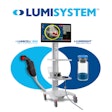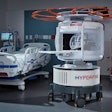
MONTREAL - Championing a cause such as appropriateness in imaging is a way for Canadian radiologists to improve their visibility as a profession, as well as protect their turf, said the immediate past president of the Canadian Association of Radiologists (CAR) at the society's annual meeting last week.
"The bottom line is that there is room for improvement [in imaging appropriateness]," said Dr. James Fraser, professor of radiology at Dalhousie University and a specialist in cardiac radiology at the QEII Health Sciences Centre in Halifax, Nova Scotia. "It provides an opportunity for us to be physician leaders, to increase the visibility of radiology as a profession, to prove our value to government, and to be patient advocates."
Making appropriate imaging a priority can include efforts such as CAR's involvement in Choosing Wisely Canada, an initiative modeled after the U.S. campaign that assists physicians and patients in engaging in discussions about unnecessary tests, treatments, and procedures, he said.
Room for progress
A guest editorial that appeared in a journal about a decade ago sparked investigation and debate about imaging appropriateness in Canada. The article claimed that up to 30% of imaging in Canada was inappropriate (Picano, BMJ, 2004, Vol. 328, pp. 578).
"This figure got tagged to CAR and our members," Fraser said. "Our members were worried about the perception [of radiology]."
The issue of appropriateness differs north and south of the U.S.-Canada border, Fraser noted. "People are not competing for imaging in Canada," he said. "We generally have wait lists."
Another key difference in Canada is its less litigious nature, which means that radiologists do not need to practice defensive medicine and overimage to the same extent as their U.S. colleagues, Fraser said.
Despite the differences, numerous published studies validate that there is room for progress in imaging appropriateness in Canada. A study published last year found that just 44.3% of lumbar spine MRIs ordered to investigate back pain were appropriate, with the remainder being inappropriate or of uncertain value (Emery et al, JAMA Internal Medicine, 2013, Vol. 173:9, pp. 823-825).
The role of CPOE
Incorporating computerized physician order-entry (CPOE) decision support is one way to identify and potentially reduce inappropriate imaging in Canada. In a 2011 study, 10.9% of imaging orders were deemed inappropriate after CPOE implementation, based on CAR guidelines (Bowen et al, Journal of the American College of Radiology, 2011, Vol. 8:4, pp. 251-258).
The findings were surprising given the study's setting, Fraser said.
"It was within a tertiary care, pediatric academic hospital, a population where you would expect physicians to be well-informed of what's appropriate," he said. "Despite that, there were 11% [of orders] that were deemed inappropriate."
CPOE decision support allows evidence-based data collection, which could improve the appropriateness of imaging studies.
"If you don't have the metrics, you don't know what the problem is," Fraser said. "You also don't know if you are making a difference with the use of guidelines and decision support."
Citing data from the Canadian Institute for Health Information, a not-for-profit, nongovernmental organization that tracks data on healthcare utilization and delivery in Canada, Fraser noted that more than $2.2 billion was spent on imaging in Canada in a recent two-year period.
"Even small percentages of improvement by addressing inappropriate imaging can have a significant impact on the cost of healthcare that we deliver," he said.
Imaging exams can be judged inappropriate for several reasons, including the inability of the scan to contribute to patient management, performance of an exam at the wrong time, and failure to obtain imaging when indicated, Fraser explained. Inappropriate imaging unnecessarily exposes patients to radiation and can lead to overinvestigation of incidental findings that ultimately prove benign, he added.
One typical example of inappropriate imaging is a referring physician failing to order a coronary CT angiogram and instead ordering cardiac catheterization for a patient who is symptomatic and presenting with low to intermediate risk of coronary artery disease.
"A less appropriate exam is ordered," Fraser said, noting that referring physicians have to be provided with guidance on appropriate examinations that reflects changes in technology.
"We are a technology-based profession, and technology changes very quickly," he said in a follow-up interview with AuntMinnie.com. "The appropriate examination for any particular clinical presentation may change quickly enough so referring physicians can't stay on top of the changes. One of the important things is to have up-to-date guidelines that are useable for [referring physicians]."



















